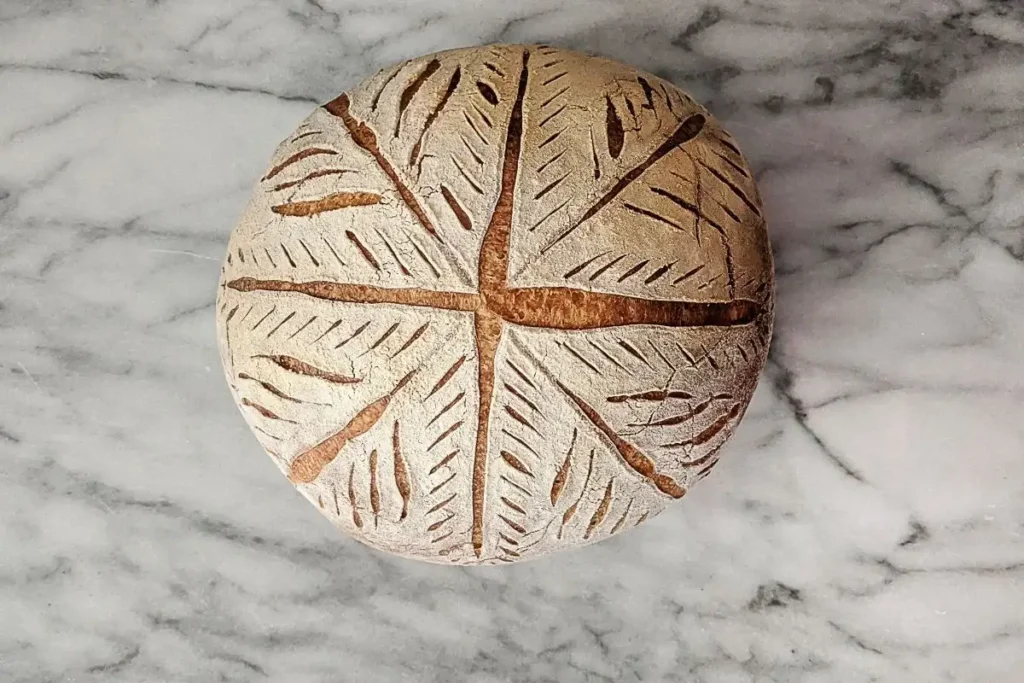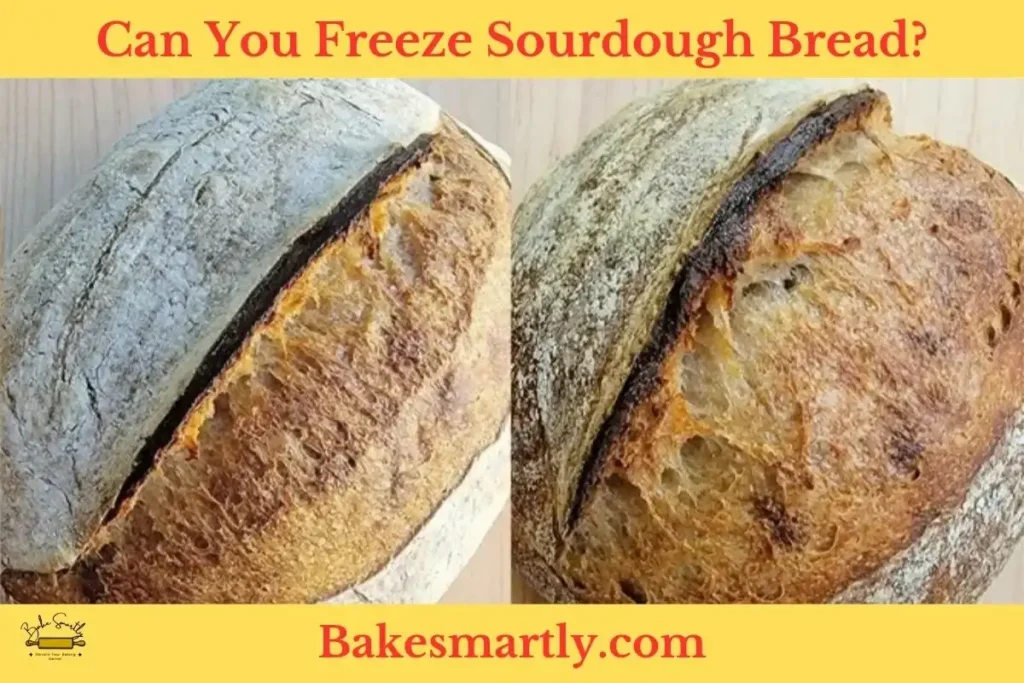
10 Reasons Why Is My Sourdough Bread Collapsing
Sourdough bread is a culinary delight, celebrated for its complex flavors and unique texture. However, if you’ve ever experienced the frustration of your sourdough bread collapsing, you know that this seemingly simple bread can be surprisingly tricky.
In this article, we’ll delve into the reasons behind sourdough bread collapse and provide you with insights and solutions to ensure your next loaf turns out perfectly.
Table of Contents
Toggle10 Common Reasons Why Sourdough Bread Collapses
However, if you’ve ever encountered the frustration of a deflated loaf or a sourdough bread collapse, you’re not alone. Understanding why this happens is crucial for mastering the art of sourdough baking.
In this section, we’ll explore ten key reasons why your sourdough bread may collapse and how to prevent it.
1. Insufficient Gluten Development
One of the foundational elements of a successful sourdough bread is a well-developed gluten network. Gluten, a protein found in wheat flour, provides the structure and elasticity necessary to trap the carbon dioxide gas produced during fermentation. Without strong gluten, your bread can’t hold its shape, resulting in a collapsed loaf.
To prevent this, make sure to knead your dough thoroughly. Proper kneading ensures the gluten strands align, creating a strong and stretchy network. Using high-protein bread flour, rather than all-purpose flour, can also contribute to better gluten development.
2. Over-Fermentation
Fermentation is the heartbeat of sourdough bread. It’s the process by which wild yeast and lactic acid bacteria consume the sugars in the dough, producing carbon dioxide gas and alcohol. This gas inflates the dough, causing it to rise. However, if fermentation continues for too long, the dough becomes overinflated, leading to a sudden collapse when baked.
To prevent over-fermentation, be attentive to your dough during the bulk fermentation stage. Note the time and temperature of the process, and experiment to find the perfect balance for your specific environment. Cooler temperatures and shorter fermentation times can help avoid over-proofing.
3. Poor Shaping Techniques
Shaping your sourdough bread properly is vital to its structural integrity. Improper shaping can lead to weak spots in the dough, making it susceptible to collapsing during baking. To prevent this, practice your shaping techniques to ensure a smooth and taut surface.
When shaping, be gentle yet firm, working to create a cohesive and well-rounded dough. There are various shaping methods to explore, so find one that works best for you.
Or you can watch this video tutorial on sourdough shaping techniques for more in-depth guidance.

4. Temperature and Humidity
The environment in which your sourdough dough ferments plays a significant role in its success. Temperature and humidity can profoundly affect fermentation, which, in turn, impacts the dough’s structure. A cold environment will slow down the fermentation process, while a warmer one can speed it up.
To maintain control, consider adjusting the temperature and humidity of your dough’s environment. Using a proofer, placing your dough in a warm area, or even experimenting with the refrigerator can help you regulate fermentation.
5. Flour Selection Matters
The type of flour you use in your sourdough bread can greatly influence its final structure. Different flours have varying protein levels, and protein content directly correlates with gluten development. High-protein bread flour is an excellent choice for achieving a robust gluten network.
Experiment with different flours to understand their characteristics and how they affect your dough. While all-purpose flour can work, it may require additional adjustments to achieve the same structure as high-protein bread flour.
6. Hydration Levels
Hydration levels in your dough refer to the ratio of water to flour. High hydration doughs, with a greater amount of water, can be more challenging to handle. Excessive hydration can weaken the dough’s structure and lead to a sagging or collapsing loaf.
Be mindful of your dough’s hydration level and adjust it according to your preferences and experience. Start with a lower hydration dough to make handling and shaping more manageable as you build your sourdough baking skills.

7. The Importance of Proper Scoring
Scoring, or slashing the surface of your bread before baking, is a critical step in controlling the bread’s expansion. It allows gas to escape and guides the bread’s rise during baking. Inadequate or improper scoring can result in unwanted expansion and subsequent collapse.
To master scoring, invest in a sharp bread lame or razor blade. Practice different scoring patterns and angles to create beautiful designs while controlling the bread’s shape during baking.
8. Avoiding Overproofing
Overproofing occurs when the dough is left to rise for too long. During overproofing, the gluten structure weakens, leading to a lack of support for the gas produced during baking. This often results in a deflated loaf.
To avoid overproofing, monitor your dough closely during the bulk fermentation and final proofing stages. Experiment with shorter fermentation times or cooler temperatures to prevent your dough from becoming too inflated.
9. The Impact of Altitude
If you live at a high altitude, you may need to make adjustments to your sourdough bread recipe. Lower air pressure at higher altitudes can lead to faster fermentation and different dough behavior. Experiment with changes in hydration, fermentation times, and oven temperature to account for altitude-related variations.
10. Troubleshooting Sourdough Bread Collapse
If you’ve experienced sourdough bread collapse, don’t be discouraged. Troubleshooting is a natural part of the learning process. Keep a baking journal to record your techniques, including hydration levels, fermentation times, and scoring methods.
By making small adjustments and learning from each attempt, you can improve your sourdough baking skills and achieve that perfect, well-risen loaf.

How to Fix Collapsed Sourdough Bread
I know it can be really disappointing when your sourdough bread collapses, but don’t worry! With a few simple fixes and some practice, you can still salvage it and make something delicious.
Here’s how to rescue your sunken sourdough:
- Slice and Toast: If your loaf deflates or sinks in the middle, carefully cut away the dense or gummy parts. Then, toast the slices to make them crispy and give them more flavor.
- Make Croutons: Cut the collapsed bread into cubes and bake them until they’re golden and crispy. These croutons can add a nice crunch to your salads and soups.
- Try Bread Pudding: Use the collapsed bread to make a rich bread pudding. Mix it with eggs, milk, sugar, and your favorite flavors, then bake it until it’s golden brown and custardy.
- Go for Strata: A strata is like a savory bread pudding. Combine your sunken sourdough with ingredients like eggs, cheese, veggies, and herbs. Bake it until it’s golden and puffy.
- Turn it into Bread Crumbs: Grind up the collapsed bread to make homemade bread crumbs. They’re great for coating chicken, fish, or giving casseroles a crispy topping.
- Learn from Your Mistakes: Take notes on what might have caused the collapse, like your recipe, fermentation time, shaping, or scoring. Use this info to improve your future bakes.
Note: Keep in mind that even experienced bakers have their loaves collapse from time to time. It’s all part of the learning process.
Is Collapsed Bread Safe to Eat?
If you’ve ever baked sourdough bread only to find it has collapsed, you might wonder whether it’s still safe to consume. The good news is that collapsed bread is typically safe to eat. It may not look as appealing as a perfectly risen loaf, but it’s not necessarily spoiled or harmful.
The collapse is usually a result of issues like over-fermentation, poor shaping, or insufficient gluten development. These factors affect the bread’s structure and appearance but not its safety. The flavor, texture, and taste of collapsed bread remain intact, and it’s still a good source of nutrients.
However, if you have concerns about your bread’s safety, inspect it for any signs of mold, unusual odors, or off-putting flavors. If the bread appears moldy or smells off, it’s best to discard it.
In most cases, though, collapsed sourdough bread can still be enjoyed. You can transform it into croutons, bread crumbs, or use it for creative recipes like bread pudding or strata. So, don’t let a little collapse deter you from savoring your homemade bread – it’s perfectly safe to eat.
Frequently Asked Question (FAQS)
Why did my bread collapse after baking?
What to do if bread dough collapses?
Why does my bread keep collapsing?
Final Thoughts
In summary, to make great sourdough bread and prevent it from collapsing involves understanding the intricacies of gluten development, fermentation, shaping, and other critical factors. With careful attention to these elements, you can achieve the perfect, well-risen loaf that’s both visually stunning and delicious.
If you ever encounter a sunken sourdough, don’t despair. You can fix it with creative solutions, turning it into toasty slices, croutons, bread pudding, or strata. Remember that collapsed bread is safe to eat, and even experienced bakers face setbacks.
Use these experiences to get better at your baking and have more fun in the kitchen. Happy baking!
Lindsey Mackenzie
Warning: Undefined variable $post in /home/u154887947/domains/bakesmartly.com/public_html/wp-content/plugins/gourmet-core/templates/blocks/gourmet-core-block-post-related.php on line 140
Warning: Attempt to read property “ID” on null in /home/u154887947/domains/bakesmartly.com/public_html/wp-content/plugins/gourmet-core/templates/blocks/gourmet-core-block-post-related.php on line 140
About me
Hi there! I’m Lindsey Mackenzie, the founder of Bake Smartly. Baking has been my passion since childhood, growing up in my father’s bakery. With Bake Smartly, I’m excited to share my love for all things sweet and savory. Join me on this delicious journey as we whip up scrumptious treats and sprinkle joy into every bite!






